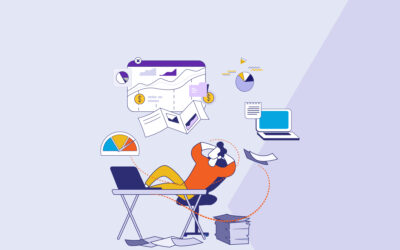Enable your billing department to become more customer-centric by easing common billing pain points without requiring involvement from your IT staff.
Part 1 in a Series
Across the insurance industry, we’re seeing considerable interest in creating seamless, frictionless customer-centric billing and payment experiences that policyholders and, increasingly, employees expect. Fortunately, modern insurance technology platforms empower business users to get the job done.
Using intuitive self-service tools, business users can now design customer-facing apps and experiences for completing various billing-related tasks, without ever filing an IT request.
Although the specific design tools vary, there are critical common denominators required for all of them. In this three-blog series, we’ll discuss what’s needed and provide examples of how insurers are using the resulting self-service capabilities to address common billing pain points.
Billing APIs open communication lines
First up, let’s demystify the geeky sounding term “application programming interface.” Most often referred to by its acronym, API.
Simply put, an API is a piece of software that serves as a communications intermediary between two technology systems (“applications”), such as your core billing system and PayPal. In fact, you can think of an API like a human translator whose job is bridging a language divide.
Further, just as highly specialized human translators are required for complicated interpersonal activities, such as negotiating payment clauses in cross-border business contracts, every API handles a specific communications task. This means complex interactions between technology applications can require multiple APIs.
APIs: building blocks for the new customer experience
The magic of APIs is how they’ve revolutionized computing, including billing and payments. Unlike the past, when a new interaction between two applications could necessitate hiring a team of expert software developers, today’s well-designed APIs can permit a single technology application to interact with an infinite combination of other applications with a few points and clicks.
APIs are one of the fundamental building blocks powering today’s app-centric world. Whether we’re checking the weather on our smartphones or sending an instant message, APIs are working in the background to get the job done.
In the context of insurance billing, APIs can enable customer experiences such as:
- Real-time access to policy and account information, and payment history;
- Viewing and managing billing for every policy that an insured individual holds, across all lines of business;
- Self-service via the channel of a person’s choosing, such as an iPhone, Android tablet, or web browser; and
- Using the payment method of choice, ranging from credit cards to emerging digital currencies like Bitcoin.
Similarly, APIs also power internal customer experiences to improve employees’ productivity and satisfaction and business partners such as agents and brokers. APIs also facilitate interactions with external third parties, including those supplying your company with billing-related services.
Insist on open APIs in abundance
To maximize the potential for APIs, it’s important to invest in technology applications that offer a rich array of them. This ensures you can build interactions among various types of applications, such as between your billing system and PayPal, Venmo, or Zelle. As you may surmise, hundreds of APIs can be required.
Which specific types of APIs you need depends upon a number of factors, a discussion of which is beyond the scope of this blog.
Regardless, what’s most important is getting what’s called “open” (non-proprietary) APIs versus those which are closed (proprietary). The more open, the more options you have for creating the customer experiences of your choosing. The more closed, the more restrictions you’ll encounter. It’s as simple as that.
Take the next step with a Digital Experience Platform
While essential, APIs typically are insufficient for empowering business users to by-pass IT expertise. Another crucial technology you’ll need is called a digital experience platform (DXP).
What a DXP is, why it’s required and what to look for are the subject of the second blog in this series: “Next BillingWave: Using Insurance DXP to Connect the Customer Experience Dots”




